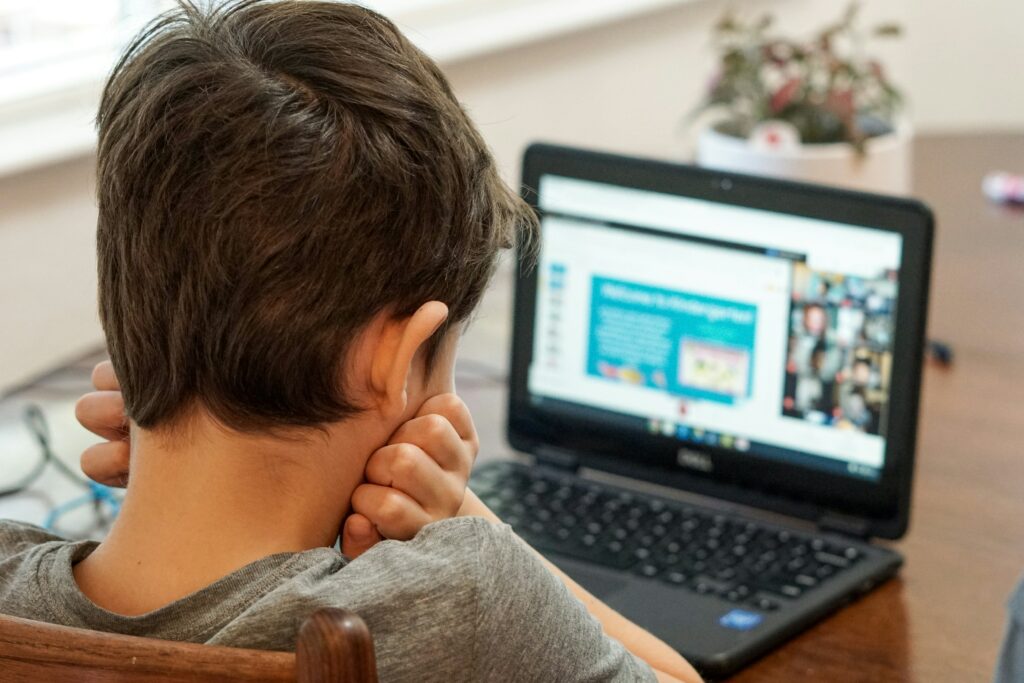Today’s digital world and the “IRL” world are more connected and overlapping than ever before. Work is email, grocery shopping is a digital list sent right to our doorstep, and schoolwork happens on a tablet. The tech is undeniably transformative, in good ways and bad. While ‘90s kids were taught all about in-person stranger danger, the internet doesn’t have as clear of boundaries for today’s kids—and cyberbullies, scammers, and hackers are looking for ways to exploit data at every turn.
Parents and adults play a pivotal role in safeguarding their children against various online threats, but where do they start? Let’s dig into what’s at stake, the safeguards already in place, and what measures you can take to help protect kids online.
What Is At Risk When Kids Explore The Digital Landscape?
The National Center for Education Statistics estimates that 94% of American children aged 3 to 18 have access to the internet at home, on devices from smartphones to computers to gaming consoles. According to a 2021 report by Common Sense Media, tweens (8 to 12 years of age) spend an average of 5 hours and 33 minutes looking at screens every day and teens (13 to 18 years of age) spend 8 hours and 39 minutes. For work and for school and for play, devices run our world, full stop.
Yet for all the good that connectivity might do, it comes with inherent risks. The rise in online users correlates with an increase in cyber threats such as data and social media account hacking, online shopping scams, online predators, and cyberbullying. The pervasive nature of data collection extends to social media platforms, gaming sites, and online services, and kids are seen as easy targets, says Tom Gaffney, cybersecurity expert at F-Secure.
“From a privacy perspective all apps are data hungry, which makes me averse to children using them,” says Tom Gaffney. “The driver for data capture is monetization. Apps collect the data and then sell it to data brokers and advertisers. When you consider this for apps that target young people, it becomes a greater concern because children are less likely to withhold personal information that they provide within the app.”
According to a survey by Javelin Strategy and Research, in 2022, some 1.7 million children fell victim to a data breach, meaning 1 in every 43 kids had personal information exposed or compromised.
Furthermore, the overuse of devices has contributed to serious health problems and chronic comorbidities, including obesity, poor sleep, and delays in development, plus mental illness including, anxiety, depression, and disordered eating, according to the American Academy of Pediatrics’ Healthy Children.
What Are Adults Supposed To Do To Protect Kids Online?
So, it’s unsafe for kids to be on the wild, wild internet. But it’s not like it’s going away, and it’s not reasonable to keep kids in the dark until they’re adults.
Luckily, there are some legal protections. The Children’s Online Privacy Protection Act (COPPA), enacted in 1998, serves as a crucial legal framework aimed at safeguarding children’s online privacy. Federal Trade Commission COPPA regulations impose strict requirements on operators of commercial websites and online services catering to children under the age of 13. These regulations mandate operators to maintain the confidentiality and security of children’s information, provide parental consent for data collection, and offer mechanisms for parental control. However, let’s note that COPPA protections apply only up to the age of 13, leaving older children vulnerable to potential risks. And 13… isn’t that old!
To mitigate the risks for kids, especially after 13, parents must take proactive steps to educate themselves and their children about online safety.
“Educate early and often,” says Samantha Humphries-Swift, product manager at cybersecurity company McAfee Labs, who emphasizes that speaking with kids from a young age, as you’re vetting the sites they can and can’t use, is the chance to build safe digital habits.
Implementing parental control tools, establishing time limits for online activities, reviewing apps before downloading, setting up separate user accounts, and fostering open communication is paramount in creating a secure online environment, too. For kids to be educated, parents need to be, so experts recommend seeking support about cybersecurity news and changes that might affect your kids.
There’s no glamorous or easy fix to protecting your kids online. Just like the stranger danger talk, it’s about being vigilant and teaching your kids to be, too.
Conclusion
The lines between online and offline activities blur at every turn today, and safeguarding children’s data and well-being is more crucial than ever. The rise in online users has paralleled an increase in data breaches, cyberbullying incidents, and privacy violations targeting young users, highlighting the urgent need for protective measures. While legal frameworks like COPPA provide some level of protection, parents must proactively educate themselves and their children about online safety and implement practical strategies to mitigate risks.
By fostering open communication, utilizing parental control tools, and staying informed about cybersecurity developments, parents can empower their children to navigate the digital world responsibly. Ultimately, ensuring children’s safety online demands ongoing vigilance and collaboration between parents, educators, policymakers, and technology providers.
This article was originally published in Certainty News.
